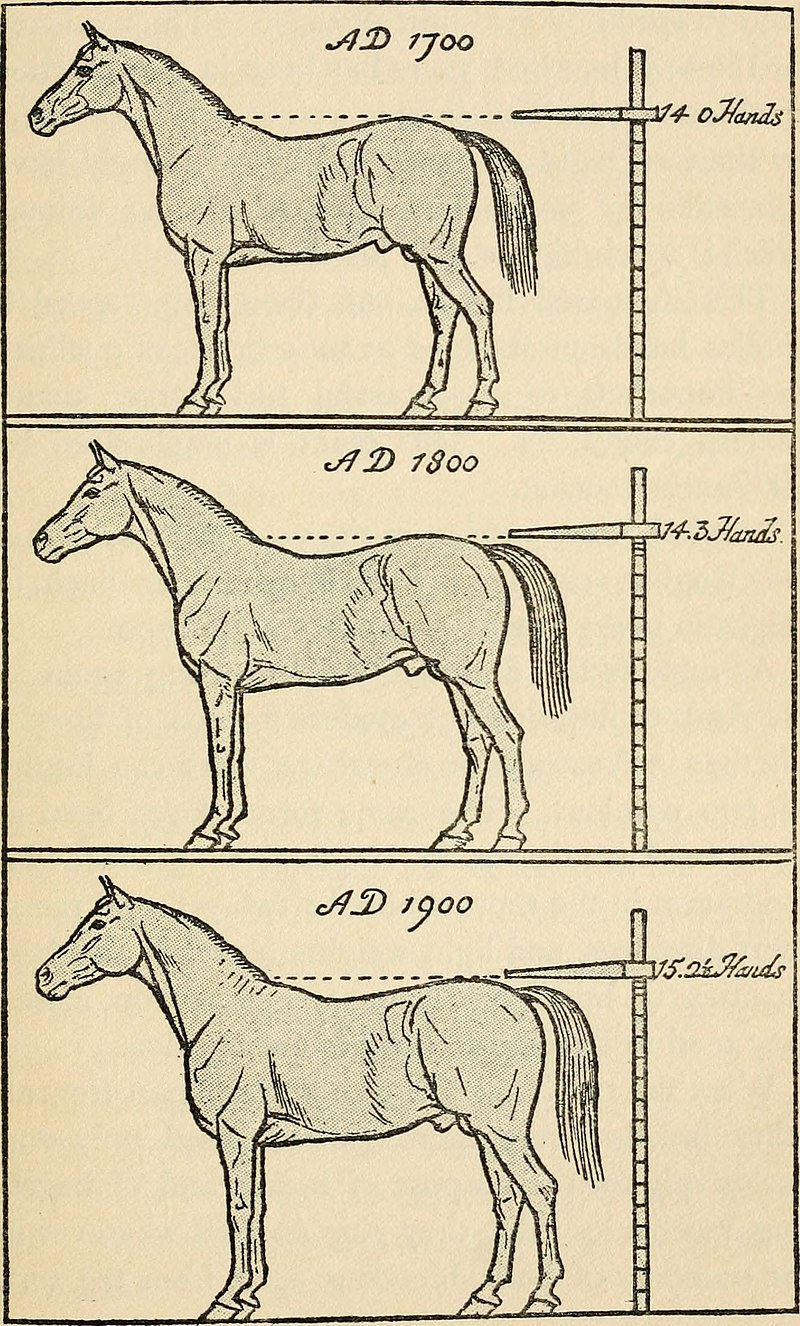Pony Up: When Roman Horses Were Small
- Lisa Hutchins

- Sep 18, 2023
- 3 min read
Updated: Oct 18, 2023

Take a look at the Roman charioteer above with one of his horses, from a 3rd century mosaic tile. Notice how the man's head is level with top of the horse's head. Compared to today’s racing and sport horses, Roman horses were positively diminutive. In fact, what we call a pony today would be the size of a typical mount in the ancient world.
To understand this, let's step back a moment to understand how horses are measured. In many English-speaking countries, horses, ponies, and other equines are measured from the ground up to the highest bump on the withers, or shoulders of the horse, using an ancient unit of measurement called hands. In shorthand, that's expressed by hh, meaning hands high. On the chart below, the withers is just above the shoulder where the dotted line ends.

Horse height has grown progressively taller, particularly in the last centuries. This chart shows the increase in racehorse height over 200 years. Keep in mind that today, a pony is anything under 14.2 hh (equivalent to 57 inches/145 cm) at the withers. That means a racehorse from 1700 would be a pony today. A racehorse of 1800 would be barely over pony size. If we had an entry for the year 2000 on the chart above, it would record the current average racehorse height as 16 hh (64 inches/163 cm). Because 21st century people are taller today than in times past, most adult riders look for a horse that’s at least 15 hands (60 inches/152 cm). It's not unusual for draft horses--those used for logging or heavy farm work--and sport horses on the international show circuit to be 17 or 18 hands (68-72 inches/173-183 cm).
Getting back to the Romans, as we can see from the surviving tomb illustration below, horses were small during the Empire. Even though the average Roman man tended to be shorter than men today (average male Roman height was 5’4” or 5’5”/163 cm-165 cm), notice that the rider’s legs still dangle long on his small-size mount.

Compare this to the photo below of Gio, the sport horse ridden by Olympic medalist Charlotte Dujardin, shown competing in the 2021 Tokyo Olympics. At 5’7” (67 inches/170 cm), Dujardin is about the same height as a tall Roman man of two thousand years ago. Gio is 16 hh (64 inches/163 cm), a height that's actually considered small for a sport horse in international competition. When Dujardin is standing flat on the ground beside Gio, her head would be just about even with the horse’s withers, not the top of his head like the charioteer up at the top of the post, while Gio's neck and head would tower over her. Notice how Dujardin's legs and feet end well above Gio’s belly.
But bigger isn't always better. Smaller size can indicate a tough and hardy horse, which was probably true of Roman mounts. Left to her own devices, Mother Nature favors smaller breeds like Mongolian horses, Icelandic horses, or wild American mustangs—all famed as rugged equines with superior endurance, even today.

Images from top to bottom:
Roman charioteer with one of his horses, mosaic tile, 3rd century AD; photo in the public domain.
Chart via Wikimedia Commons; image in the public domain.
Frieze from the tomb of a Roman cavalry officer, 1st century AD; photo in the public domain.
Charlotte Dujardin and Gio, photographed by Julian Finney via Getty Images



Comments